In a series celebrating Building’s Building Awards finalists, we look at the Building Magazine Project of the Year shortlist
Earlier this year Building announced all the firms who made it on to the shortlists for our prestigious annual Building Awards.
Now we are shining the spotlight on each category in turn and publishing a selection of the images that impressed the judges.
Today’s shortlist is for Building Magazine Project of the Year.
2 Ruskin Square, entered by Allford Hall Monaghan Morris

This landmark 10-storey office development in Croydon, south London, is designed to be the new Home Office headquarters. Delivered six weeks early and on budget, the scheme exemplifies sustainability and innovation, achieving a low embodied carbon footprint and a BREEAM Outstanding rating. The project team, including Stanhope, Allford Hall Monaghan Morris and Lendlease, ensured success through collaboration and commitment. Key achievements include flexible design for future adaptability, industry-leading energy efficiency and advanced inclusivity measures.
Ad Gefrin, entered by Todd Milburn / Richard Elphick / Brims / JCP
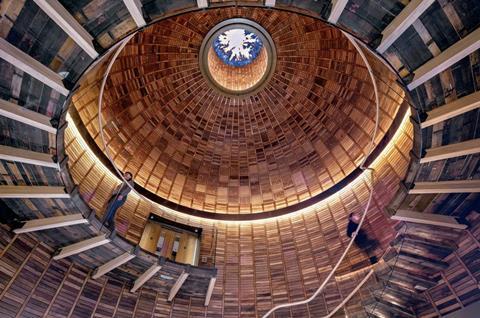
The success of the Ad Gefrin heritage centre – which includes a museum, bistro and distillery – at Wooler in Northumbria is down to the project team’s dedication and excellence. Their innovative approach and attention to detail have resulted in a state-of-the-art building that enhances the local community and promotes regional heritage. The team’s collaboration and commitment to high standards have also set a benchmark for future such developments, showcasing the transformative power of well-executed architectural projects in contributing to the cultural and economic landscape.
Gascoigne East Estate Regeneration Phase 2, entered by Willmott Dixon

Phase 2 of the regeneration of the 1960s-built Gascoigne estate in east London has achieved success through high-quality design and construction, fostering a strong sense of community. The project team, including Be First, Willmott Dixon, and White Arkitekter, collaborated effectively to deliver energy-efficient homes that significantly reduce carbon emissions. Innovative use of offsite construction and Passivhaus design have ensured low energy costs for residents. The project also created local employment opportunities and provided substantial social value, making a lasting positive impact on the community in Barking and Dagenham.
Join us for the 30th edition of the Building Awards
This year’s event will take place at the Grosvenor House Hotel on 5 November.
There are 21 categories to enter, so make sure you are in the room for construction’s night of nights and to celebrate excellence.
Tickets are selling fast, so secure your place today.
London Institute for Healthcare Engineering, entered by HLM Architects

The London Institute for Healthcare Engineering at King’s College London is a pioneering facility designed to advance medical technology and innovation. Situated within the historic Guy’s and St Thomas’ hospital complex, the building integrates seamlessly with its surroundings while offering state-of-the-art research and collaboration spaces. The project team, including HLM Architects and Morgan Sindall, successfully delivered a highly adaptable and sustainable environment. Key achievements include innovative design features, flexible workspaces and achieving BREEAM Excellent and EPC A ratings.
Lucent, entered by L&P Group
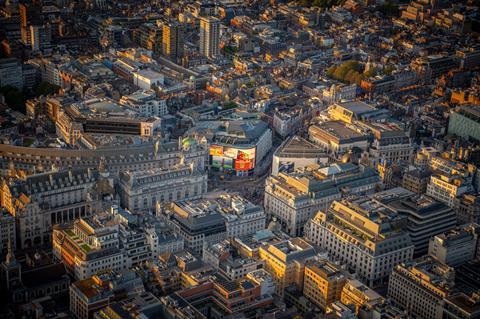
Lucent is a landmark mixed-use development at One Sherwood Street in central London, adjacent to the capital’s iconic Piccadilly Circus. The project, led by Landsec with Fletcher Priest Architects and Wates, revitalised a historically complex site, integrating new structures with carefully restored facades including the grade II-listed London County and Westminster Bank. The team’s collaboration and innovation delivered a modern, sustainable space that seamlessly blends heritage with contemporary design, featuring extensive terraces, a unique Light Garden and BREEAM Outstanding certification.
National Galleries of Scotland, entered by Tilbury Douglas

The transformation of the National Galleries of Scotland in Edinburgh has enhanced visitor experience while preserving architectural heritage. The project team, including Tilbury Douglas, expanded the gallery’s footprint with a new subterranean gallery and improved access and circulation. The remodelled East Princes Street Gardens elevation now features the museum’s main entrance, while new retail and restaurant spaces have been incorporated. Innovative engineering, such as a bespoke tunnelling solution, ensured protection of the historic structure. This project, completed in September 2023, integrates modern sustainability practices with the gallery’s neoclassical architecture.
This year’s judges
- Yetunde Abdul, director of industry transformation, UKGBC;
- Bola Abisogun, founder, Digital Twin Skills Academy CIC;
- Brian Berry, chief executive, Federation of Master Builders;
- Rachel Bell, director of partnerships, Stride Treglown;
- Anna Clarke, director of policy and public afffairs, Housing Forum;
- Mark Cleverly, partner, CPC;
- Joanne De La Porte, senior sirector - project management, Gleeds;
- Katy Dowding, CEO and president, Skanska UK;
- Karen Gidwani, partner, Fenwick Elliott;
- Kay Hughes, design director, HS2;
- Ellie Jenkins, partner, Akerlof;
- Félicie Krikler, director, Assael;
- Doris Lam, development director, EcoWorld London;
- Liz Male, founder, LMC;
- John Marland, chief development officer, Bruntwood;
- Flan MacNamara, construction director, Sellar;
- Kamran Moazami, executive managing director, property & buildings, WSP;
- Robin Nicholson, fellow, Cullinan Studio;
- Iain Parker, director, T&T Alinea,
- Simon Rawlinson, head of strategic research and insight, Arcadis;
- Mark Robinson, chief executive, Scape Group;
- Veronica Senior, senior manager global captial projects, Lloyd’s;
- Scott Sanderson, partner, PRP;
- Neal Shasore, head of school | CEO, London School of Architecture;
- Trudi Sully, UK & Europe lead - industrialised design & construction, Mott MacDonald
- Lynne Sullivan, chair, National Retrofit Hub;
- Gauri Talathi-Lamb, chief executive, FHP ESS;
- Martha Tsigkari, senior partner and head of the applied R+D group, Fosters + Partners,
- Jo Wright, director, Perkins&Will
One Great Cumberland Place, entered by Allford Hall Monaghan Morris
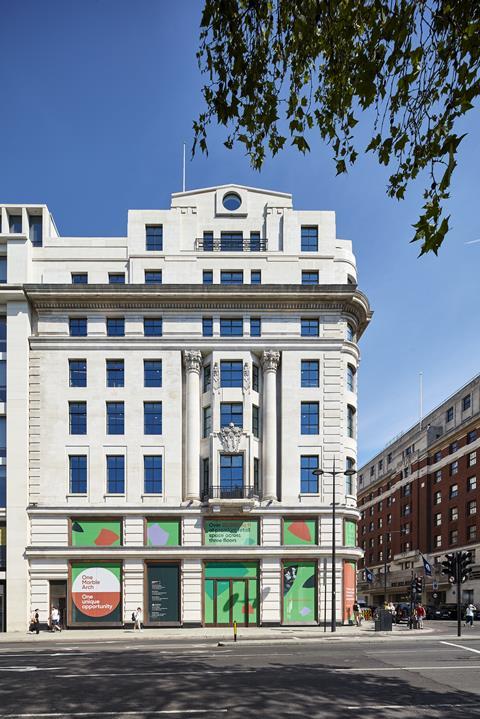
One Great Cumberland Place is a meticulously executed facade retention and regeneration project, transforming a historic 1920s building into modern office and retail spaces. Located near London’s Marble Arch and Hyde Park, the project balances heritage preservation with contemporary functionality. The project team, including the Portman Estate, Allford Hall Monaghan Morris and Galliford Try, overcame numerous challenges to deliver a future-ready building. Key achievements include sustainable design strategies, flexible workspaces and a resilient structure, ensuring the building’s relevance for decades to come.
Shoreline, entered by Jenner Group
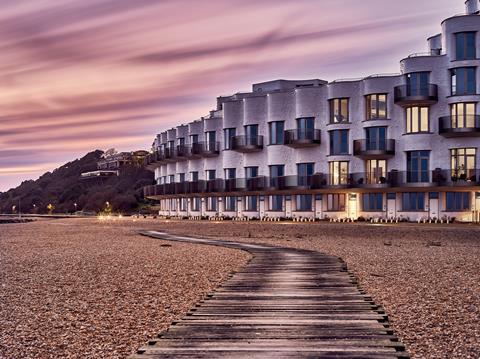
Shoreline is a striking residential development on Folkestone’s beachfront, embodying a modern interpretation of Edwardian architecture. The project, led by Jenner Group in collaboration with ACME, includes 84 luxury homes with uninterrupted sea views. The complex design, featuring bespoke materials and innovative construction techniques, was meticulously executed despite challenging coastal conditions. The dedicated project team ensured every detail reflected quality and sustainability. Shoreline has been pivotal in the ongoing regeneration of Folkestone, blending contemporary elegance with community-focused design.
TTP Campus, entered by Sheppard Robson
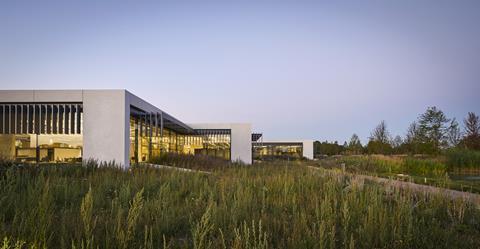
The TTP Campus in Melbourn, Cambridgeshire, exemplifies innovative design and collaboration. The project, designed by Sheppard Robson and ID:SR Sheppard Robson, features three primary buildings: the Exchange, the Hive and the Tech Barn, each tailored for specific functions. The campus’ modular, flexible design fosters an environment of continual problem-solving and interdisciplinary collaboration. The project team, including Bidwells, Gleeds, AECOM, AKT II and SDC, achieved a seamless integration with the landscape, enhancing sustainability and supporting TTP’s inventive spirit and business growth.
UCL Marshgate, entered by Mace Group
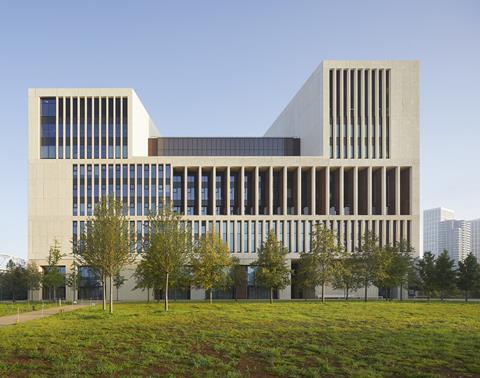
UCL Marshgate is the largest building in the first phase of UCL’s new Stratford campus in east London, designed to foster cross-disciplinary research and innovation. Delivered by Mace in collaboration with Stanton Williams and Arup, this 35,000m2 facility exemplifies resilience and adaptability, integrating cutting-edge design with sustainability. The project team employed innovative construction techniques, including BIM 3D modelling and on-site prefabrication, to achieve BREEAM Excellent and a 100% renewable energy supply. Marshgate offers a dynamic, future-proof environment for academic collaboration and public engagement.





























No comments yet